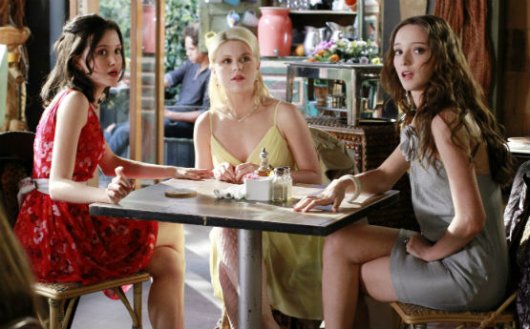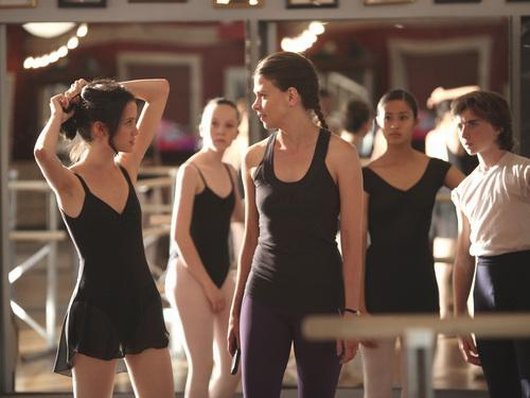
Head Of Buns
by ALEX CARNEVALE
Bunheads
creators Amy Sherman-Palladino and Lamar Damon
Michelle Simms, 37, is a Las Vegas showgirl. She never takes her top off, at least in public, and complains good naturedly about superior financial compensation for those who do. It is not that Michelle (Sutton Foster) is unwilling to sell herself, it is implied throught the remarkably, comfortingly familiar first season of Amy Sherman-Palladino's Bunheads. She is simply holding out for the right price.
Over the past few years, Michelle's dancing and general grace has attracted a persistent fan, Hubbell (Alan Ruck, Cameron from Ferris Bueller's Day Off reconstituted as a 54 year old shoe magnate). Each time he visits Las Vegas on business, he brings Michelle flowers and gifts. Because she is somewhat starved for other admirers, she allows his affections to persist, until one drunken night, she agrees to marry him and move to his home in California. The fact that it overlooks the ocean is explanation enough.

Neal Stephenson once observed that "no man is more comprehensively doomed than him whose chief source of gratification is making favorable impressions on some particular woman." After Michelle and Hubbell are married in a Las Vegas chapel, they relocate to a small coastal California town where he lives with his mother Fanny (Kelly Bishop, formerly Lorelai's unctuous mother on Sherman-Palladino's previous series, Gilmore Girls). On his way to meet them at a local bar, he dies in a car accident, leaving everything to his new wife.

Instead of telling Fanny to find other lodgings, Michelle graciously cedes the main residence to her and moves her things to the property's sizable cottage. She is unhappy, but nowhere near as unhappy as she was before.
Her mother-in-law runs a dance studio where the eponymous bunheads tout their wares. Dance is a wonderful art, but the ideas it gives young women about their bodies are so destructive they largely render the art impotent except in the most outstanding cases. Fretting over the size and shape of their instruments is routine for the four teenagers who constitute the rest of the show's main cast.
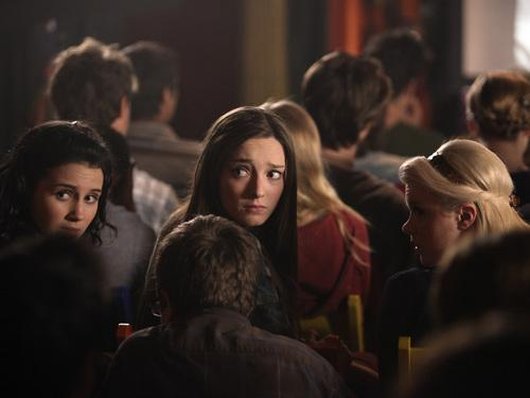
Sherman-Palladino writes the young women as the adults they inevitably are, which means these bunheads are more brimming with life than their Disney Channel peers. Just as on Gilmore Girls, the exaggerated rapid fire dialogue is at once completely ridiculous and wholly realistic. It is a joy to simply listen to Bunheads without images, in wonderment at the mind that created such unmistakable voices.
Unlike Aaron Sorkin, with whom she is so frequently compared, Sherman-Palladino has a real grasp on why people who talk too much talk too much. Every character does not sound exactly the same, although to be honest they all do resemble their creator to varying degrees. Parsed out line by line, Sherman-Palladino's scripts approach the intoxicating rhythm of iambic pentameter. Since she is always showing off, she is never showing off.
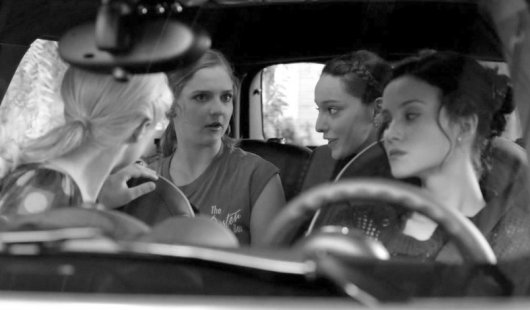
The women of Bunheads are unmistakably not from this generation. The fact that they feel a genuine connection with an older woman whose idea of dance is performing The Nutcracker is retrograde enough on its own. Teens don't obsess over cell phones, and generally seem to disdain technology. None of the girls are having sex, and only one is in a relationship. Above all, this is about utility. It was a lot simpler to write a dramatic plot when every person in the world could not get in touch with every other person instantly via text message.
Sherman-Palladino's portrait of America is mostly white, entirely secluded from the actual world we live in. (A dancer of color appears suddenly in the show's eighth episode, as if she suddenly remembered.) We are not on Earth, we are on Amy's planet, and it is enough that people try to explain themselves to one another — explaining the world is a task she leaves to other artists. The self contains everything in Bunheads; objects, places and ideas are simply the apparatus that surrounds them. Thematically, dance is a natural extension of this rule.
Yes, the protagonists on Bunheads are astonishingly self-centered. This is the only modern thing about them. They do not think about the news, except possibly gossip in US Weekly or whatever is happening in their tiny hamlet of Paradise. Michelle's interest in social concerns only stretches as far as trying to get a supermarket chain to move into town because there is nowhere to get coffee. Politics is the area of a flip remark or casual joke, it is not serious.
In the episodes that follow her husband's death, Michelle considers a variety of relationships: a fabulously wealthy and attractive hermit, a boytoy surfer/bartender, a Jewish director. Men are scarce in Paradise, CA, but that does not mean that Sherman-Palladino does not accord them any importance. They exist as moons or satellites, ever present, but not always in view. Sherman-Palladino is actually incredible at writing males; she exhibits a rare empathy for their plight in her world. Since all the women on the show are so obviously her, males allow Sherman-Palladino to flex her creative muscles, and the archetypes she creates for them — some sad, others unexpectedly joyful — are like no others on television.
Alex Carnevale is the editor of This Recording. He is a writer living in Manhattan. He tumbls here and twitters here. You can find an archive of his writing on This Recording here. He last wrote in these pages about Showtime's The Real L Word.
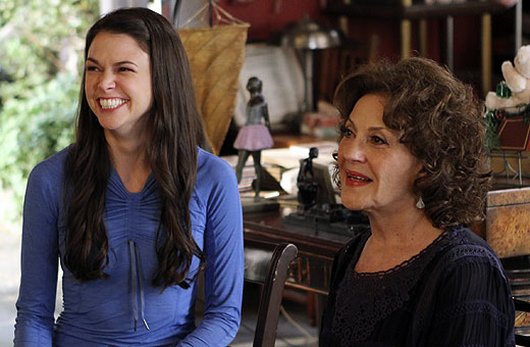
"Take It With Me" - Tom Waits (mp3)
"Picture In A Frame" - Tom Waits (mp3)
